Intel Teases Ice Lake-U Integrated Graphics Performance
by Ian Cutress on May 26, 2019 11:05 AM EST- Posted in
- GPUs
- Intel
- graphics
- Trade Shows
- Ice Lake
- 15W
- Sunny Cove
- Computex 2019
- Gen11
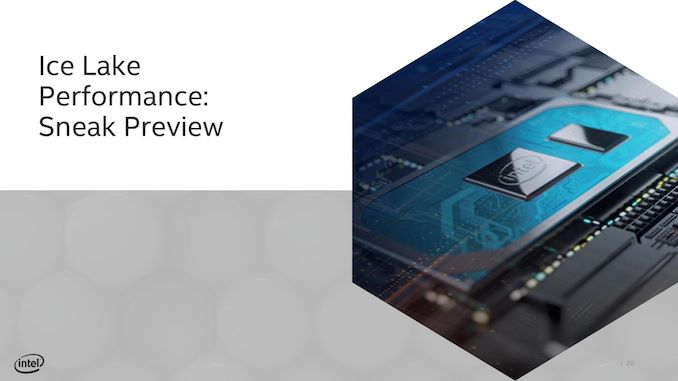
Another snippet of information from Intel today relates to the company’s future mobile platform CPU. We know it’s called Ice Lake-U, that it is built on Intel’s 10nm process, that it has Sunny Cove cores, and has beefy Gen11 integrated graphics. We’re still waiting on finer details about where it’s going to be headed, but today Intel is unloading some of its integrated graphics performance data for Ice Lake-U.
It should be noted that this data is performed by Intel, and we have had no ability to verify it in any way. Intel shared this information with a number of press in order to set a level of expectations. We’ve been told that this is Intel’s first 1 TeraFLOP graphics implementation, and it performs as such. The presentation was given by Ryan Shrout, ex owner and editor-in-chief of PC Perspective, and data was performed by his team inside Intel.
Ryan first showed us a direct comparison between the Gen9 graphics found in Intel’s latest and best Whiskey Lake platform at 15W up against a 15W Ice Lake-U product. The results make for pleasant reading. In the game demo scenes that Intel showed us, we saw upwards of a 40% gain in performance in average frame rates. Percentile numbers were not shown.
When comparing to an equivalent AMD product, Intel stated that it was almost impossible to find one of AMD’s latest 15W APUs actually running at 15W in a device – they stated that every device they could find was actually running one of AMD’s higher performance modes. To make the test fair, Intel pushed one of its Ice Lake-U processors to the equivalent of a 25W TDP and did a direct comparison. This is essentially AMD’s Vega 10 vs Intel’s Gen 11.
For all the games in Intel’s test methodology, they scored anywhere from a 6% loss to a 16% gain, with the average somewhere around a 4-5% gain. The goal here is to show that Intel can focus on graphics and gaming performance in ultra-light designs, with the aim to provide a smooth 1080p experience with popular eSports titles.
Update: As our readers were quick to pick up on from Intel's full press release, Intel is using faster LPDDR4X on their Ice Lake-U system. This is something that was not disclosed directly by Intel during their pre-Computex presentation.
| Intel Test Systems Spec Comparison | |||||
| Ice Lake-U | Core i7-8565U (WHL-U) |
Ryzen 7 3700U (Zen+) |
|||
| CPU Cores | 4 | 4 | 4 | ||
| GPU | Gen 11 (<=64 EUs?) |
UHD Graphics 620 (24 EUs) |
Vega 10 (10 CUs) |
||
| Memory | 8GB LPDDR4X-3733 |
16GB DDR4-2400 |
8GB DDR4-2400 |
||
| Storage | Intel SSD 760P 256GB |
Intel SSD 760P 512GB |
SK Hynix BC501 256GB |
||
For some background context, LPDDR4X support is new to Ice Lake-U, and long overdue from Intel as a consequence of Intel's 10nm & Cannon Lake woes. It offers significant density and even greater bandwidth improvements over LPDDR3. Most 7/8/9th Gen Core U systems implemented LPDDR3 for power reasons, and OEMs have been chomping at the bit for LPDDR4(X) so that they don't have to trade off between capacity and power consumption.
That Intel used LPDDR4X in Ice Lake-U versus DDR4 in the AMD system means that Intel had a significant memory bandwidth and latency advantage – around 56%, on paper at least. This sort of differential matters most in integrated graphics performance, suggesting that this is one angle that Intel will readily leverage when it comes to comparisons between the two products.
Moving on, the last set of data comes from Intel’s implementation of Variable Rate Shading (VRS), which was recently introduced in DirectX 12. VRS is a technique that allows the game developer to change the shading resolution of an area on the screen on the fly, allowing a developer to reduce the amount of pixel shading used in order to boost performance, and ideally doing this with little-to-no impact in image quality. It is a new supported feature on Gen11, but it does require the game to support the feature as well. The feature is game specific, and the settings are tuned by the game, not the driver or GPU.
Intel showed that in an ideal synthetic test, they scored a 40% uplift with VRS enabled, and in the synthetic test comparing VRS on and off, that extra performance put it above an equivalent AMD Ryzen system. AMD’s GPU does not support this feature at this time.
Intel is also keen to promote Ice Lake as an AI CPU, due to its AVX512 implementation, and any software than can take advantage of AI can be equipped with accelerated algorithms to speed it up.
We expect to hear more about Ice Lake this week at Computex, given Intel’s keynote on Tuesday, but we also expect to see some vendors showing off their Ice Lake-U designs.
| Want to keep up to date with all of our Computex 2019 Coverage? | ||||||
 Laptops |
 Hardware |
 Chips |
||||
| Follow AnandTech's breaking news here! | ||||||


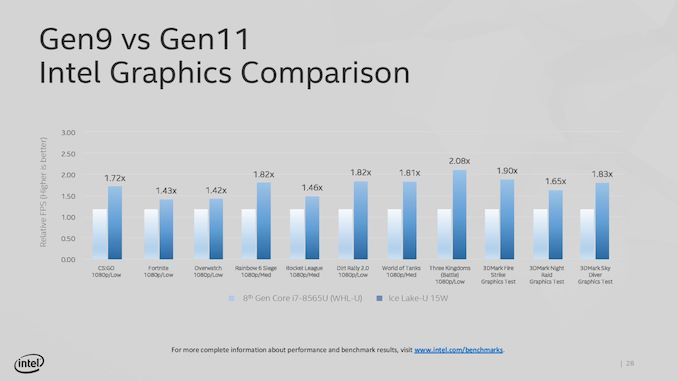
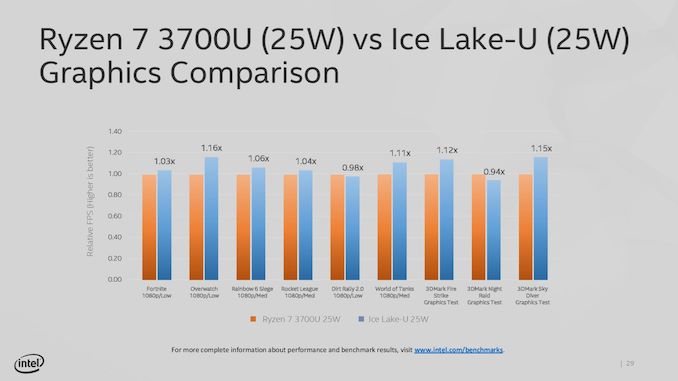
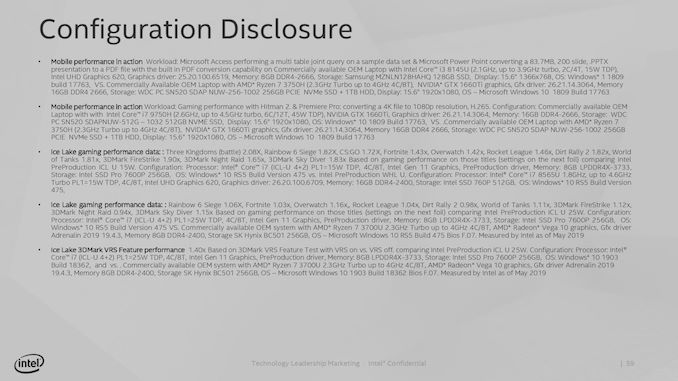

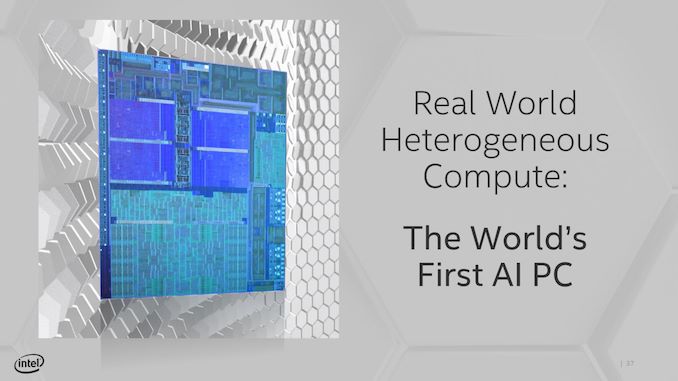








69 Comments
View All Comments
hukax - Sunday, May 26, 2019 - link
> For all the games in Intel’s test methodology, they scored anywhere from a 6% loss to a 16% gain, with the average somewhere around a 4-5% gain.With 56% more bandwidth
Ice Lake-U LPDDR4X-3733
Ryzen DDR4-2400
RedGreenBlue - Sunday, May 26, 2019 - link
Good catch^Alistair - Sunday, May 26, 2019 - link
That is absolutely hilarious. Benches were the following for the 3 different systems:1. Ice Lake-U LPDDR4X-3733
2. Intel 8565U 16GB memory DDR4-2400
3. AMD 8GB DDR4-2400
Like that even makes sense. They are comparing the most expensive configs with the cheapest, in Intel's words a "commercially available OEM system with AMD".
Alistair - Sunday, May 26, 2019 - link
I hope for Intel's sake the AMD system at least was dual channel, and not single, or otherwise the Intel fake benchmarks (remember last year lol?) strike again.Alistair - Sunday, May 26, 2019 - link
Ryan Shrout... great... /sSantoval - Sunday, May 26, 2019 - link
It was 100% single channel. Intel's deceptive benchmark is two-fold, with both dramatically slower DRAM and single channel DRAM. Either is bad, both is a disaster - or in Intel's case an "it makes us look good marketing opportunity".Brunnis - Monday, May 27, 2019 - link
Why would you write something like that? "100% single channel". That was never all that plausible to begin with and Intel has now confirmed that the AMD laptop was run in dual channel mode:https://twitter.com/i/web/status/11329606557309706...
Siats - Sunday, May 26, 2019 - link
It'll do you well to read up on the differences between LPDDR4 and DDR4, a 3733 configuration of the former is low end nowadays.maroon1 - Sunday, May 26, 2019 - link
So ?! What is your point ?!It is not intel fault that AMD did not update their memory controller and use LPDDR4X. Laptop with Ice lake will use LPDDDR4X while AMD laptop will use DDR4. That what will be available to consumers,
Alistair - Sunday, May 26, 2019 - link
We are interested in a cpu comparison, not a memory comparison that Intel is providing here. Ryzen can run with faster memory also.